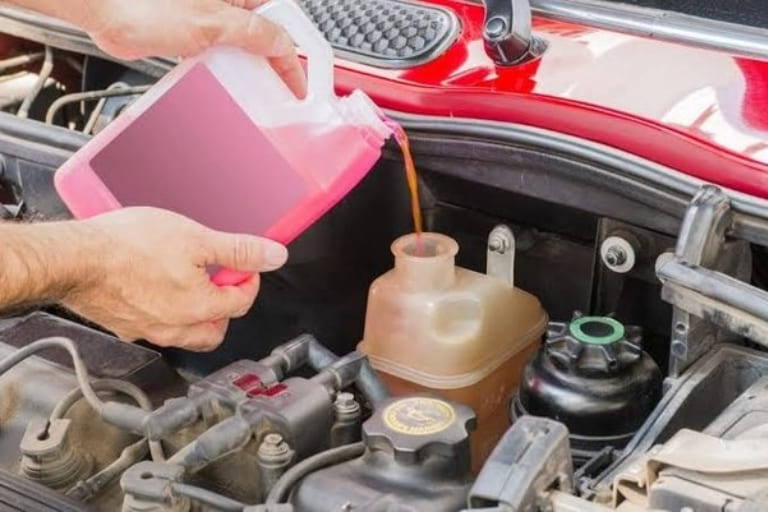The transmission system in your car is responsible for delivering power from the engine to the wheels. And transmission fluid maintains the system lubricated and working smoothly. However, the fluid can become contaminated and break down over time, causing damage and possibly even transmission failure. That is why it is critical to change your transmission fluid on a regular basis.
Many car owners are intimidated by the prospect of changing transmission fluid. But it is a simple procedure that can be accomplished at home with the correct equipment and some basic understanding.
In this blog, we’ll walk you through how to change transmission fluid step by step in this blog article, so you can maintain your car in good shape and prevent costly repairs down the line.
Contents
- 1 How to Change Transmission Fluid
- 1.1 Tools and Material Needed
- 1.2 Safety and Precautions
- 1.3 Step-by-Step Process to Change Transmission Fluid
- 1.3.1 Step 1: Park and elevate the vehicle
- 1.3.2 Step 2: Locate the transmission fluid pan
- 1.3.3 Step 3: Drain the old transmission fluid
- 1.3.4 Step 4: Inspect the transmission fluid filter and change it if necessary
- 1.3.5 Step 5: Secure the transmission fluid pan
- 1.3.6 Step 6: Refill the transmission fluid
- 1.3.7 Step 7: Check for leaks
- 2 Why is Transmission Fluid Change Necessary?
- 3 How to know when to change transmission fluid?
- 4 Frequently Asked Questions
- 5 Conclusion
How to Change Transmission Fluid

Changing transmission fluid by yourself may seem difficult, especially if you’re not accustomed to working on autos. However, with the correct equipment and some basic understanding, it is a procedure that can be completed at home with relative ease.
Gather the appropriate tools and materials, find the transmission fluid pan, drain the old fluid, install a new filter, refill with fresh fluid, check for leaks, and properly dispose of the old fluid to change your vehicle’s transmission fluid.
Please keep in mind that it is critical to use the correct type and amount of fluid and follow the manufacturer’s instructions for your specific vehicle.
Tools and Material Needed
The following tools and equipment will be required to change your transmission fluid:
- Ramps or a hydraulic jack
- Wrench for draining the old transmission fluid
- Pan to collect used transmission fluid.
- To seal it, use a transmission pan gasket.
- The recommended type of new transmission fluid
- Filter for transmission
- Funnel
Safety and Precautions
Here are some considerations and recommendations to keep in mind when replacing your transmission fluid:
- Wear gloves and promptly wash your skin to remove any residue after changing fluids.
- Transmission fluid is dangerous to the environment. As a result, it is vital to avoid dumping or emptying transmission fluids into the environment.
- Make sure you have enough space beneath the car and that the jacks are securely fastened. When working beneath the car, always park on a flat, even surface and use support supports, chucks, or other appropriate bracing to ensure safety in the event that a jack fails or the vehicle attempts to roll off ramps.
- If you need to maintain the gearbox in the past properly, replace the fluid instead of flushing it. This is because flushing the transmission increases the likelihood of some gunk becoming lodged in the transmission’s tiny oil channels. It can also harm the aged rubber seals.
Step-by-Step Process to Change Transmission Fluid
To simplify the procedure of replacing the transmission fuel. Here is a step-by-step guide for changing the transmission fuel on your own:
Step 1: Park and elevate the vehicle
Make sure your vehicle is safely lifted and parked on a level surface. To access the gearbox fluid pan, raise the vehicle with jack stands or a lift.
Step 2: Locate the transmission fluid pan
The transmission fluid pan is typically situated under the car, near the transmission. You may need to review your vehicle’s owner handbook to find it.
Step 3: Drain the old transmission fluid
Place a drain pan beneath the transmission fluid pan and remove the pan by loosening the bolts. The old fluid should be drained into the pan.
Step 4: Inspect the transmission fluid filter and change it if necessary
Examine the transmission fluid filter for damage or obstructions after emptying the old fluid. Replace the filter as needed.
Step 5: Secure the transmission fluid pan
Clean the pan and transmission mating surfaces before securing them with bolts torqued to the manufacturer’s specifications.
Step 6: Refill the transmission fluid
Pour the correct type and amount of transmission fluid into the funnel until it reaches the proper level. Consult your vehicle’s owner handbook for the proper fluid type and capacity.
Step 7: Check for leaks
Start the engine and let it a few minutes to warm up. Check for leaks around the transmission fluid pan and filter, then double-check the fluid level.
Why is Transmission Fluid Change Necessary?

Changing your transmission fluid is necessary because it is the lifeblood of the transmission that lubricates, cools, and provides hydraulic pressure for the components.
Over time the fluid might get filthy or low, producing transmission troubles in your vehicle. A transmission fluid replacement is a simple and affordable maintenance activity that may help keep your car running smoothly.
Most car manufacturers recommend changing your transmission fluid every 30,000 to 60,000 miles which means 50,000 miles on average. However, depending on the type and model of your car and your driving habits, this time may be shorter or longer.
How to know when to change transmission fluid?
Knowing when to change your transmission fluid is critical to the longevity of your car. Here are a few indicators that it’s time to replace your transmission fluid:
Examine the owner’s manual
For the manufacturer’s suggested service interval for replacing transmission fluid, consult your vehicle’s owner handbook.
Discolored or burned odor fuel
If the fluid is discolored, hazy, or has a burnt odor, it is probably time for a change. Healthy transmission fluid is pinkish or reddish in color and smells nice.
Delayed shifting or sliding gears

If you notice a delay in shifting gears or if the gears slip while driving, your transmission fluid may need to be replaced.
Unusual noises
Grinding or whining noises when shifting gears might indicate that your transmission fluid is filthy or low.
Overheating
If your transmission overheats, it might harm the fluid, necessitating a fluid change.
Frequently Asked Questions
Can I check Transmission Fluid Without Dipstick?
It depends upon the vehicle. Some modern vehicles may lack a typical dipstick for monitoring transmission fluid levels, necessitating a special tool or a trip to the technician. Many older vehicles, however, still have dipsticks for checking the transmission fluid level.
Can I change transmission fluid myself?
Yes. You can replace the transmission fluid but need some mechanical knowledge and expertise. It’s critical to take the right safety measures and processes, such as using the correct type of fluid, properly disposing of the old fluid, and checking for leaks following the change. If you need clarification about any of the stages or need more tools, it is recommended to seek the advice of a professional technician.
Can I add transmission fluid instead of changing it?
In some circumstances, adding transmission fluid to your car might enhance shifting and performance. If your transmission fluid is discolored or smells burned, merely adding extra fluid will not cure the underlying issue. In such circumstances, it is critical to replace the fluid completely to avoid additional transmission damage.
Is it OK to change the transmission fluid without changing the filter?
Replacing the transmission fluid without changing the filter is theoretically feasible, but it is not advised. The filter removes pollutants from the fluid but can get clogged over time and hinder fluid passage through the gearbox. Changing the filter with the fluid helps ensure the gearbox runs smoothly and saves money on future repairs.
How do I know if my transmission fluid needs to be changed?
If you notice a delay in shifting gears or gears slipping while driving, discolored or burnt-smelling fluid, strange noises when shifting gears, overheating, or if your vehicle has beyond the recommended transmission fluid replacement interval, you should replace the transmission fluid.
Related Articles:
- Is A Transmission Fluid Leak Covered Under Warranty?
- Water In Transmission Fluid: Symptoms & Solutions
- Transmission Fluid Vs Coolant
- Transmission Fluid vs Brake Fluid
- How Long Should I Drive Before Checking The Transmission Fluid?
- Transmission Fluid Gushing Out: Causes & Solutions
- Mistakenly Put Transmission Fluid In The Oil: Is There Any Fix?
- Is There A Warning Light For Low Transmission Fluid?
- Can You Lose Transmission Fluid Without A Leak?
Conclusion
In conclusion, replacing the transmission fluid in your car is an important maintenance operation that helps extend the life of your transmission and prevent costly problems such as delayed shifting, sliding gears, overheating, strange sounds, etc.
Check the transmission fluid on a regular basis and search for indicators of a need for a change, such as discolored or burnt-smelling fluid, slow shifting or slipping gears, strange sounds, overheating, or exceeding the recommended change interval.
While it is feasible to change the fluid yourself, it needs some knowledge and experience working on automobiles, as well as adhering to the required safety measures and processes.
Following the manufacturer’s suggested service intervals or replacing the fluid every 50,000 miles on an average will help guarantee that your vehicle’s gearbox runs smoothly and save you money on future repairs.
